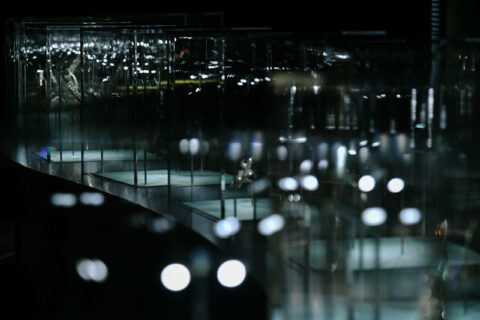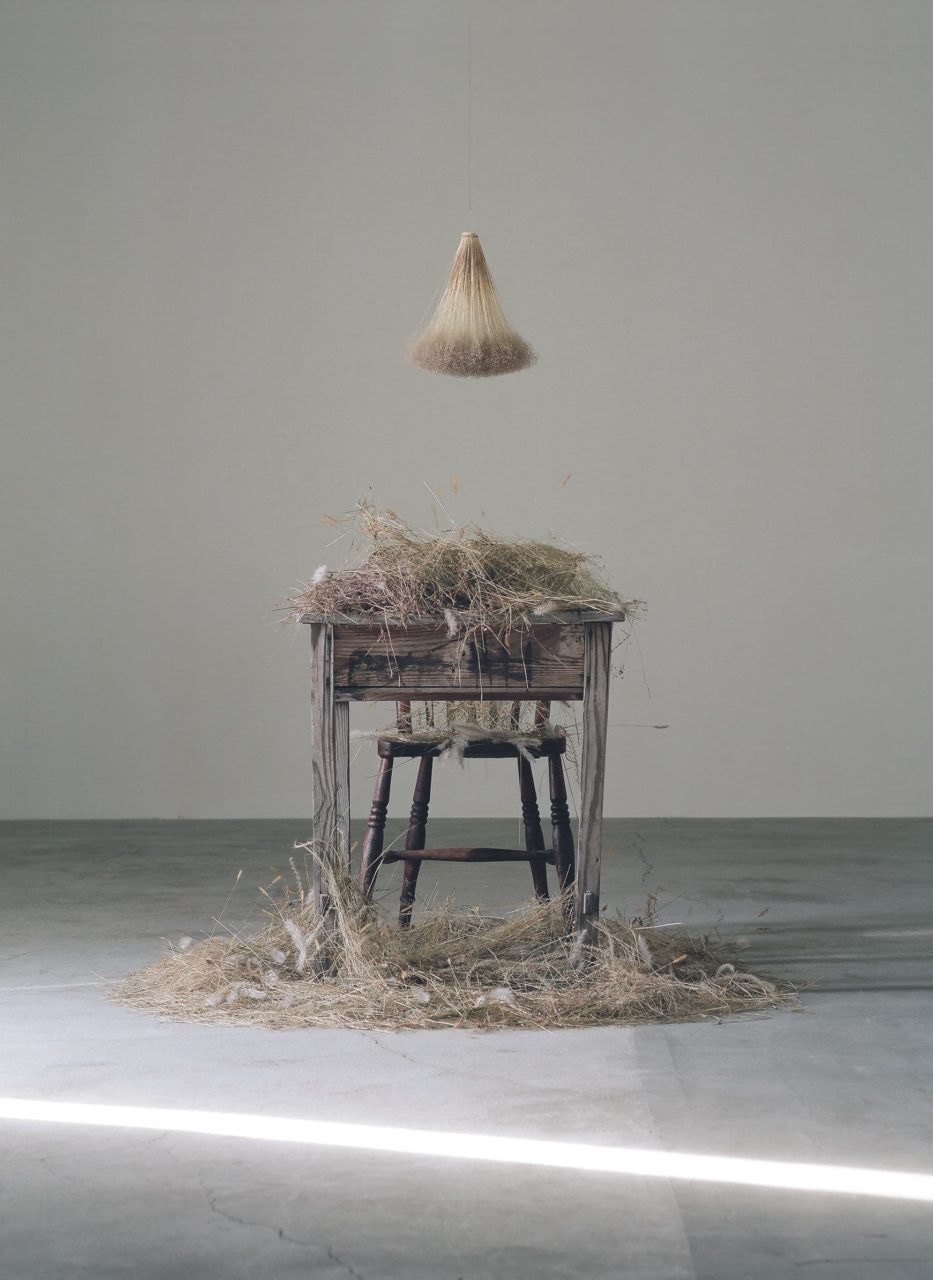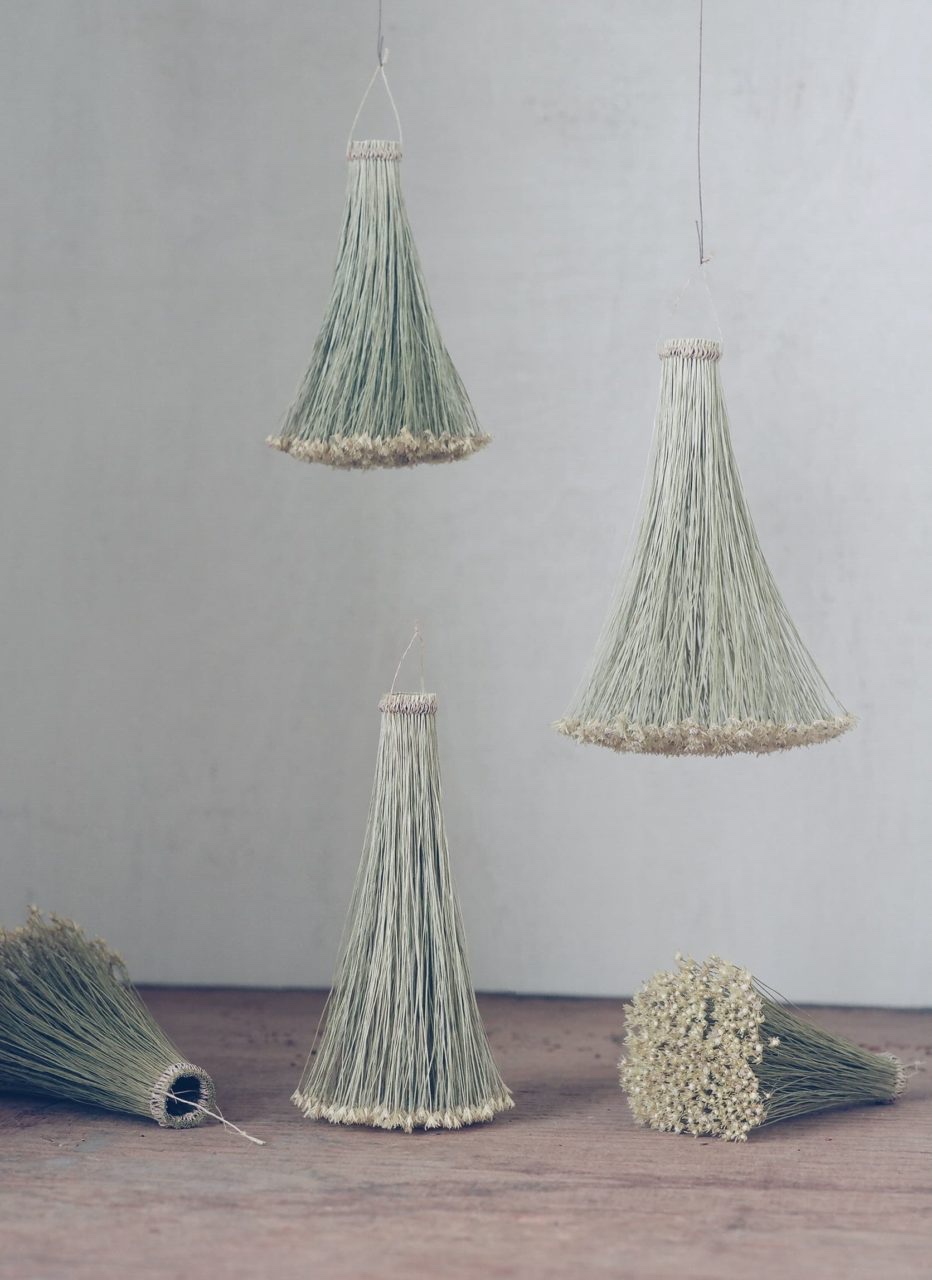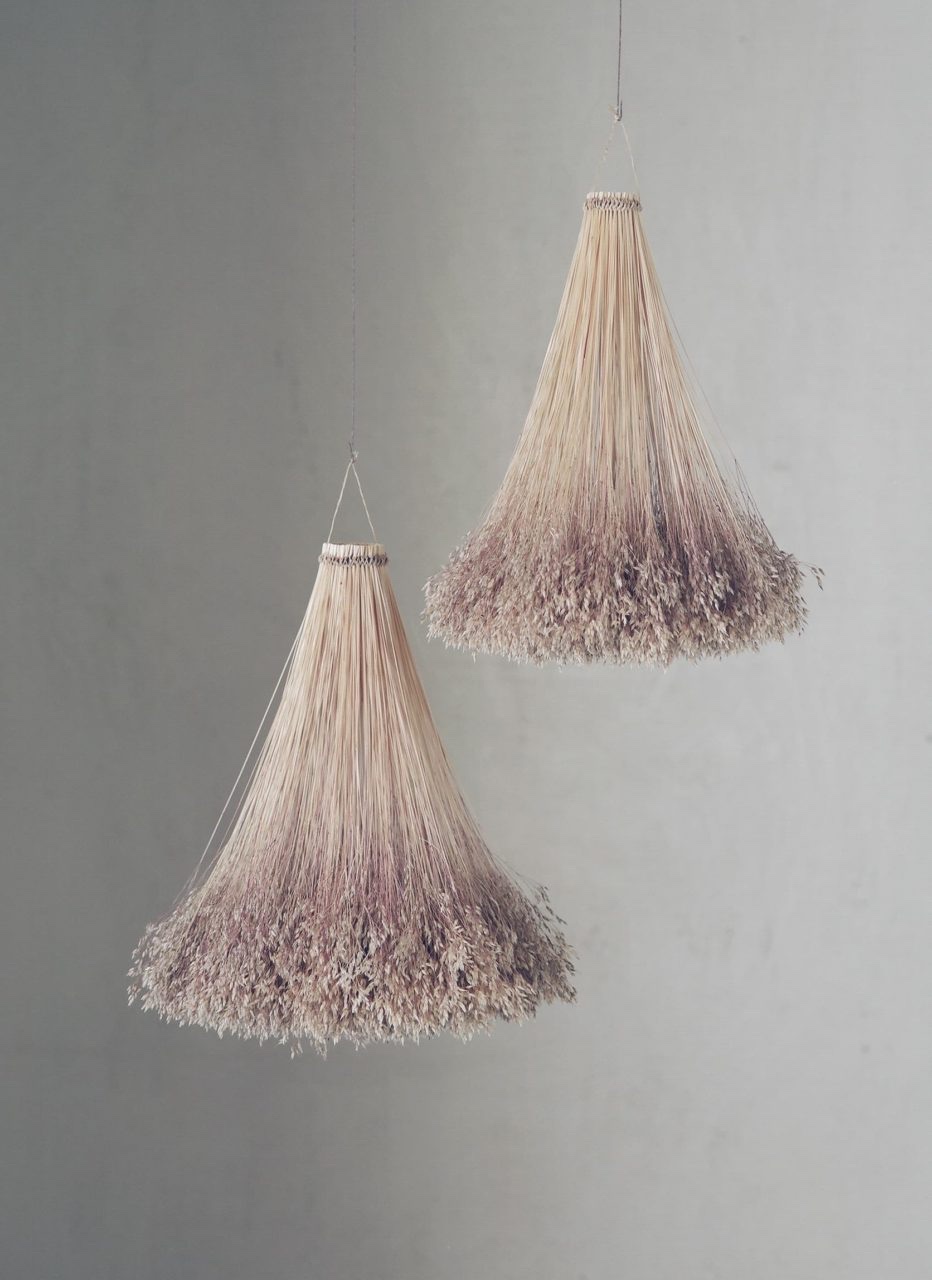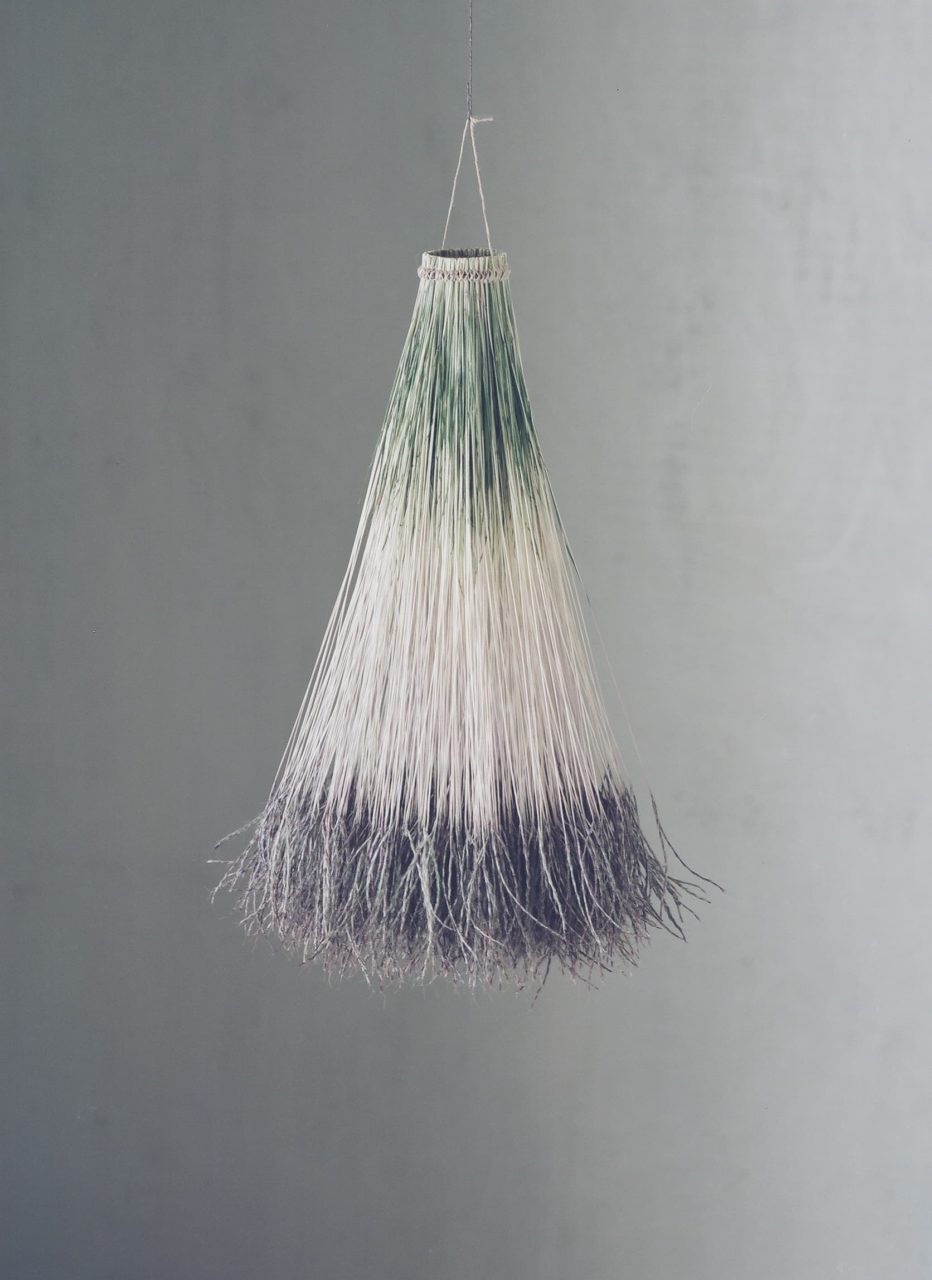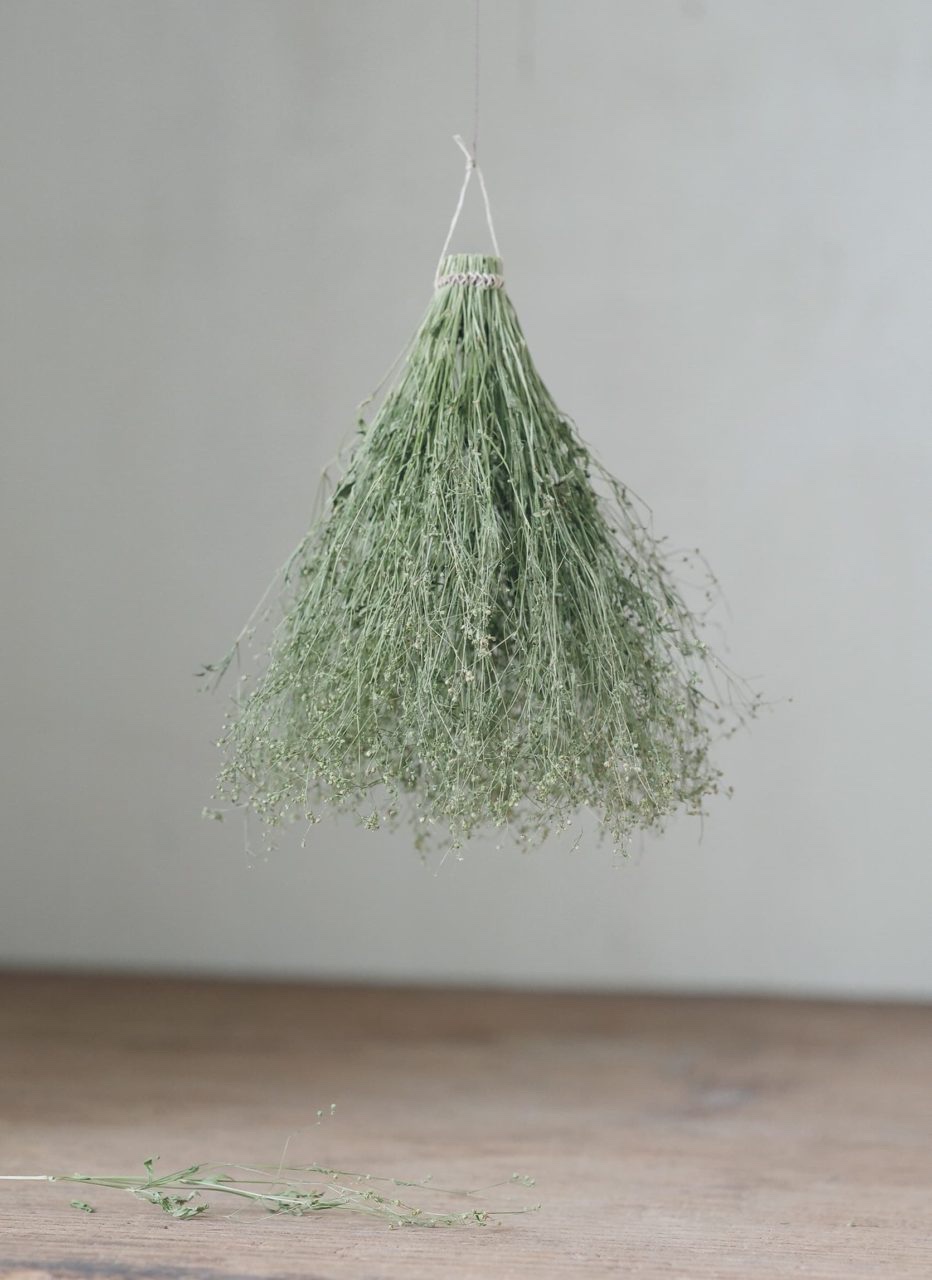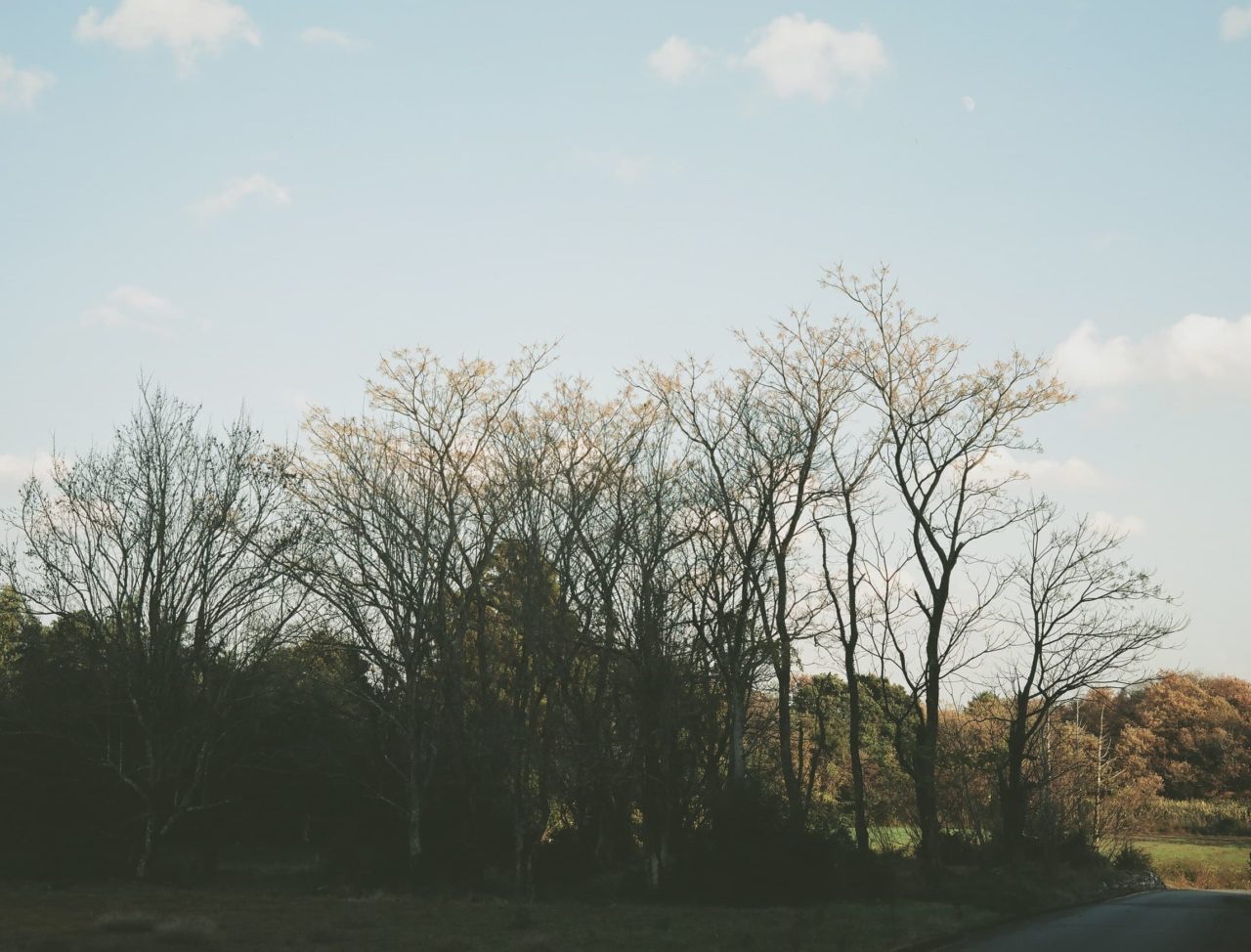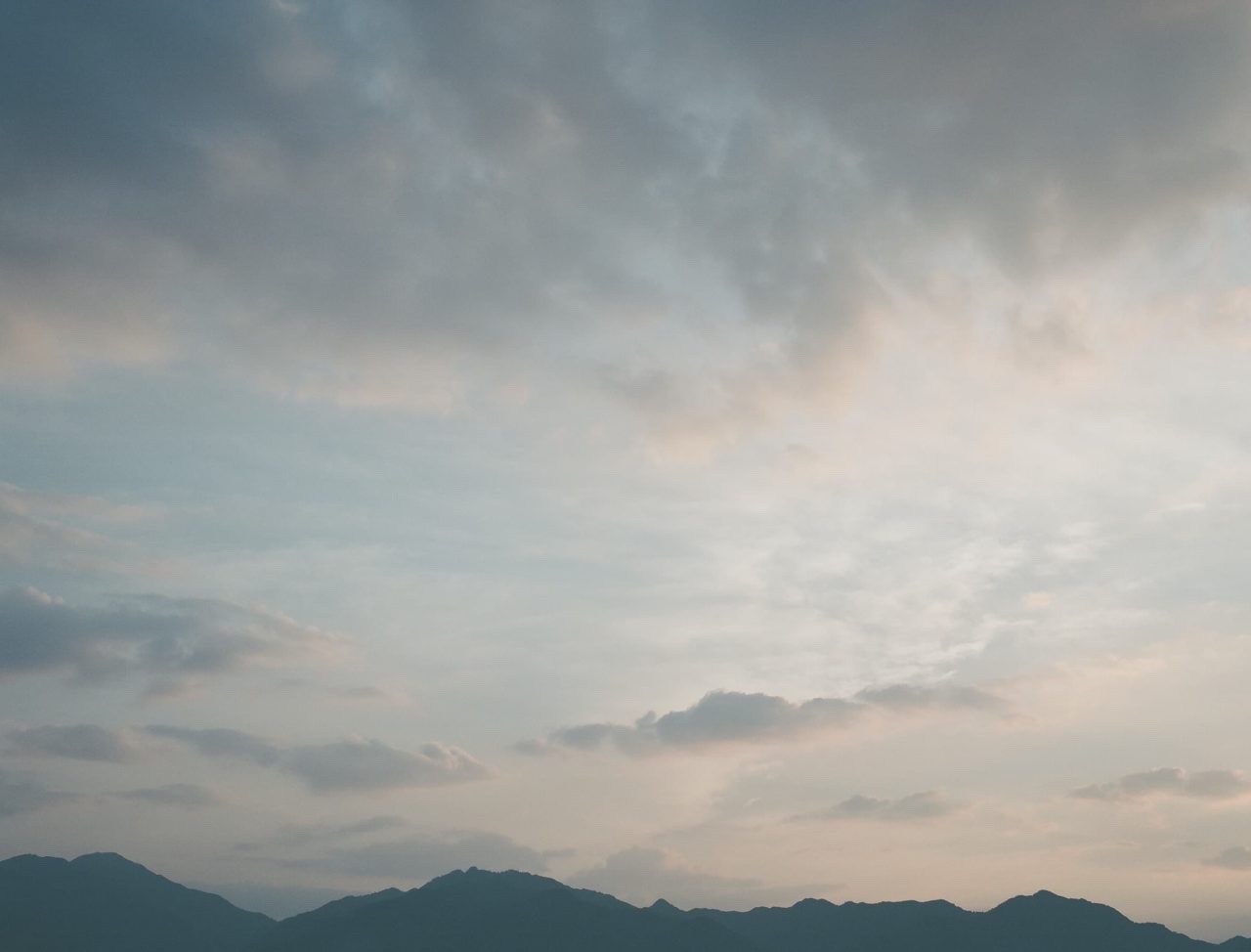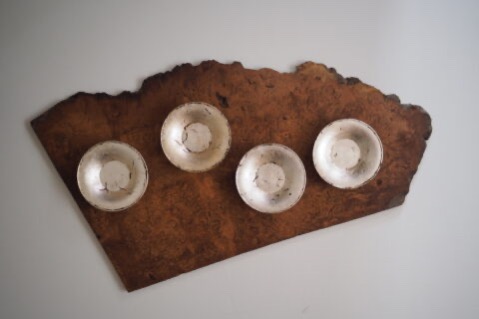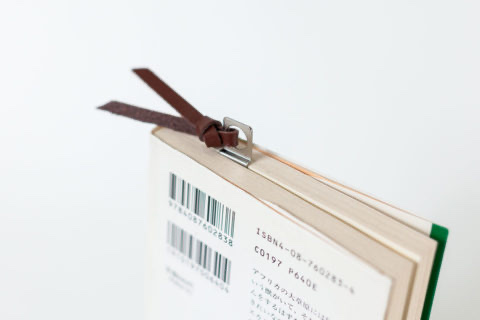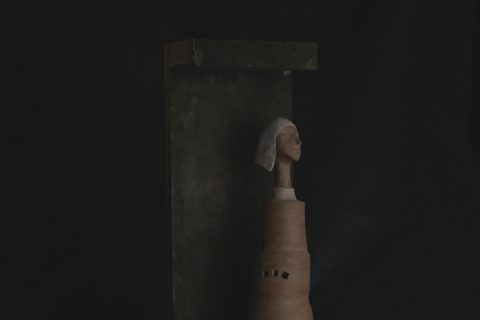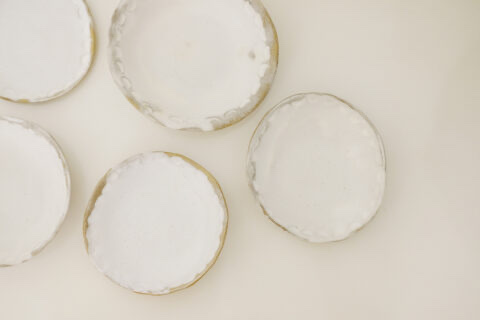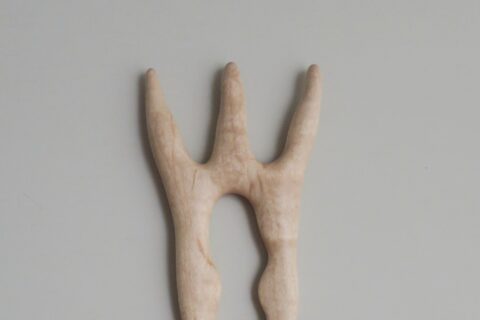話說,阪本龍一在紀錄片裡,頭頂藍色水桶去聽雨那個畫面,一直是我心中很深刻的一幕,到底是為什麼呢。
把自己罩起來,外頭的聲音卻能聽得更清,滴嗒⋯滴嗒⋯,偶爾一兩塊樹葉掉落,滑走水滴,那個聲音又不一樣了。
不知怎的,KiKusa這個花藝工作室的作品會令我想起這一幕。
讀過創立人堀之内信哉說,因為「草在樹下自然生長,這個畫面讓我留下深刻印象,我想創造出有這種感覺的花藝。」於是2008年便有了KiKusa,木草。
There is a scene in Ryuichi Sakamoto: CODA where Sokamoto stands in the rain, a blue bucket atop his head to capture the sound. For a long time, I have wondered why that scene is so poignant to me.
Perhaps it comes down to Sakamoto’s inquisitiveness: to don an explorer hat and listen intently to that which shifts and bends to the sways of nature.
Somehow, the florist KiKusa reminds me of this scene.
KiKusa’s founder Shinya Horinouchi once said, “There is something striking about the way weeds and ferns grow beneath a canopy of trees – I want to evoke the same imagery in my floral arrangements.” The result is KiKusa, conceived in 2008.
2011年的大地震,眼前世界劇烈地改變,他開始從大自然裡探索生死,從植物的生命回看人以至萬物。他在想,植物的力量或者能成為穩住人們內心的根源。
於是在2013年的夏天,他關了大阪的店,搬回三重縣松阪市的鄉下。童年蹲在草叢間的記憶,在眼前的曠野中湧現,天空、山脈、大樹、小草,從上而下延綿開來。他慢慢改用野花和野草創作,也開始耕作,每天就看著腳下的奧妙展現。
「在田野裡會感覺到,我們在大自然中能看到的小東西有多大。」那時候,田野真正成為了他另一個宇宙。
The earthquake in 2011 radically changed the world as we once knew it. It, too, has shifted Horinouchi’s interest to nature, the central probe of which is a new way of thinking about life and death across species – and a new discourse around plants as a source of inner strength.
In the summer of 2013, Horinouchi shut down his shop in Osaka and moved back to his native Matsusaka. The landscape he saw was awash with memories of crouching in weeds as a child. The sky met with tall trees and ferns at the silhouette of the mountain range. Inspired, Horinouchi shifted his practice to wildflowers and weeds, all while experimenting with agriculture and the spectacle of life coming into being.
“In the great expanses of the open fields, you really see the immensity of the little things in nature,” says Horinouchi, who may or may not have been thinking of the cosmic beauty observed by William Blake: to see a world in a grain of sand, and a heaven in a wild flower.
在KiKusa成立十年後,他創作了全新作品系列 —— 懸掛植物「TURUSU」,以小王子裡的名句「L’essentiel est invisible pour les yeux.(真正重要的東西是肉眼無法看見的)」為註腳。
一束束野花草,在半空垂下來,像倒過來去看大樹,像天上地下互換。彷彿忽爾明白,這也許是他對生命的註解。這必需是每天看見的日常,彷似差不多,但看著看著,終於在裡面看到了那麼一點、微小的、不同。奧秘就在這裡面吧。
「我知道這腳下長著美麗的草,就足以讓我感到快樂。」
At KiKusa’s 10th anniversary, Horinouchi launched a new series of hanging plants – TURUSU, inspired by The Little Prince: “L’essentiel est invisible pour les yeux.” (What is essential is invisible to the eye)
Like inverted trees or surreal dreamscapes, these hanging plants address Horinouchi’s semiotics of life where, upon closer examination, things that seem ordinary at first glance beget a sense of wonder.
“To know that there is beauty beneath my feet – it’s enough to bring me joy.”
Why do we all find beauty in the sky?
Is it empathy?
